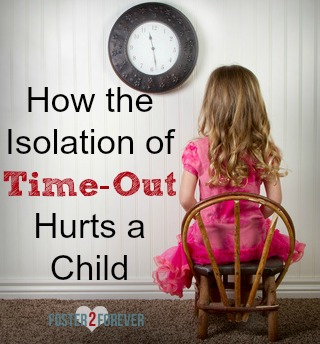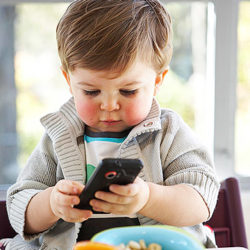Is time-out really the best method to discipline your child?
My little boy would NEVER stay in time-out when I had to discipline him! The ordeal of constantly moving him back to his time-out chair with his emotions (and mine) escalating exponentially became a horrifying punishment, not only for him but for me as well. (Admittedly, it was a good workout, especially if I had to dodge the chair he was throwing at me.)
But I was taught that time-out is the best method of discipline — one minute for each year of a child’s age. Is that what you were taught?
Is forcibly restraining a child in time-out a really helpful method of discipline in changing a child’s behavior?
We put our child in time-out and somehow expect that our child’s behavior will magically change when the time-out is over. Does time-out actually teach our child how to behave? Sending a child away to a time-out when he misbehaves doesn’t help him LEARN how to behave.
In fact, it can be counterproductive, especially for at-risk children. The isolation of a time-out encourages a child to disengage from the world, especially when dealing with life’s disappointments.
To some children, a time-out can be a form of banishment and rejection from the family, and can cause insecurity in a child’s mind. You may be sending the message to your child: “My parents don’t want me around.” Read how our foster daughter reacted to time-out.
And this is particularly true with foster or adopted children that struggle with attachment. Because of a child’s early history of neglect and abuse, he may already feel disconnected from the family due to the lack of bonding in his earlier relationships.
The isolation of a time-out can encourage a child to disconnect from the world, and can reinforce the belief that he is alone in the world and can only rely on himself.
On another point, when you send your child to his bedroom for a time-out, you may be sending your child to a bedroom full of toys and entertainment. “Go to your room and think about what you did!” Is a child really thinking about what he did wrong and how he can do better next time? Alone in his bedroom, a child can amuse himself alone, and detach emotionally to forget about problems in the family.
Dr. Jane Nelsen, the renowned author of Positive Time-Out, through her 4 R’s OF PUNISHMENT, shows what negative feelings a child may develop when isolated:
1. Resentment: “This is unfair. I can’t trust adults.”
2. Revenge: “They’re winning now, but I’ll get even.”
3. Rebellion: “I’ll do just the opposite to prove that I don’t have to do it their way.”
4. Retreat into:
- a. Sneakiness: “I won’t get caught next time.”
- b. Reduced self-esteem: “I’m a bad person.”
“Isolation, no matter how brief, encourages the child to focus on things and objects — and not on relationships.” via The Connected Child
Instead of using time-out as a method of discipline, we have begun to use time-ins and do-overs. Although my strong-willed defiant child is in constant need of redirection and discipline, we have begun to see positive changes in his behavior.





